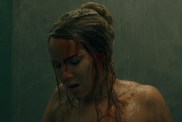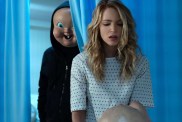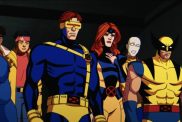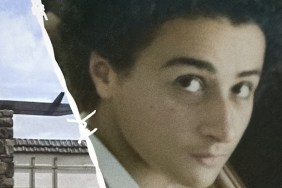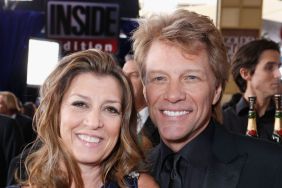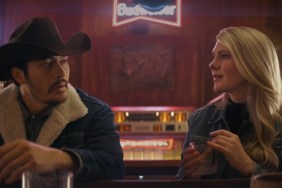
If you’re into movies and especially the Indiana Jones movies by George Lucas and Steven Spielberg, then theres a good chance you were already aware of Raiders of the Lost Ark: The Adaptation, the shot-for-shot homemade version of the Steven Spielberg action classic that teenagers Eric Zala, Chris Strompolos and Jayson Lamb spent seven summers during the 80s filming, a project that lay dormant for over 12 years before it was discovered on video tape and brought to the publics attention by Eli Roth and Harry Knowles.
This past November saw the release of Alan Eisenstock’s book “Raiders! The Story of the Greatest Fan Film Ever Made,” written with the participation of Zala and Strompolos which brings new attention to their fascinating story, one that offers lots of valuable life lessons for filmmakers, both new and inexperienced, but also those who have been making movies for years. Roughly five-and-a-half years ago, ComingSoon.net spoke with Eric Zala and with their story receiving renewed interest from the release of the book and upcoming screenings, we decided to speak to his filmmaking partner Chris Strompolos (on the right), who played Indiana Jones in the movie, about his own involvement in the project and the book that’s been written about them.
“I had disconnected from that part of my life for many years,” Strompolos told us on the phone when we spoke earlier this week. “It really wasn’t until I was reunited with Eric, and ‘Raiders’ was discovered by Eli Roth and people started watching it that I was able to see that part of my life in a joyful way. I had fun and it was interesting but I didn’t have any idea that it would take on the impact it would have with people and people would be as interested in it as they are. Whenever I’m standing with people in a room watching it and doing Q n As and certainly the book and reading about myself, it is very surreal.”
“We really did the movie completely for ourselves,” he admitted when asked whether he and Eric had some sort of endgame when they started making the movie. “We had no plans of showing it to anybody. We had no plans of selling it or sending it anywhere or using it as an entry tool into some sort of larger thing. It’s always taken its own natural path and the interest in it was completely unbeknownst to us when people started getting interested in it. When we were doing it, it was just for ourselves and it was just because we wanted to do it and we liked it and it was fun. We all wanted to see what a teenaged version of ‘Raiders of the Lost Ark’ would look like and I just wanted to play Indiana Jones. All those things were fulfilled and then when people wanted to watch it, it did end up getting through to Spielberg and Lucas and we ended up being embraced by the Indiana Jones fan community and being placed alongside the tome of Indiana Jones legend. In your heart, you always want that, that fantastical 11-year-old dream, ‘Wouldnt it be cool if ?’ and you fill in the blank. Those things fade away and for us, many of those things came true, which is really nice.”
At one point, Hollywood was going to make a movie about these three young friends from Mississippi who created their own version of Raiders of the Lost Ark but “the whole film thing cooled off,” Chris told us. “When we got involved with Scott Rudin and Paramount and Daniel Clowe, the script was in the works for a while and we pushed it and pushed it. There were so many variables happening in the industry between ‘Indy 4’ and Spielberg leaving Paramount and the fracture between him and Brad Grey and Rudin pulling his deal and going to Disney. There were just so many things that happened that the script just kind of cooled off and never really moved forward.”

“The book thing was completely separate and happened by itself as an organic thing,” he continued. “A lit agent there in New York contacted us and said ‘Hey, I read your story and I think it would make a great book,’ so we started talking to writers. We just weren’t finding a match, people who got our story and really dug it and understood it and that we could trust to take it in the right direction. Then we met Alan Eisenstock and we just felt ‘this guy is it.’ He wrote a sample chapter and nurtured that along then we moved to another agent we thought would be better suited to handle the book and somebody Alan trusted and shopped the chapter and the idea and we got picked up by St. Martin’s Press and worked on it for a couple years and it finally just hit the shelf in November. It’s been a long journey with that.”
Strompolos told us why it’s been great to have this documentation of what they achieved, partially because it means they don’t have to talk so much about it themselves. “It’s a nice catharsis to say, ‘Hey it’s all in the book, the whole Raiders thing is in the book, I’m in the book, my stories are in the book, and you’ll know me a lot better once you read the book. That’s just me. You have to get over that vulnerability of having yourself on the written page and people reading about you. Some people are strange about that and protective and for me it’s worked the opposite where because Alan did such an amazing job capturing our personalities and our stories in the book that I have a sense of peace that it’s all there and it’s told correctly. I feel that it properly represents me, so having the book out there is good. We had these great setpiece stories that we tell with the plaster story and how we made the boulder and the sets and the fire and all that kind of stuff, but the thing that Alan does with this book is he goes much deeper and he gets into some gritty things about the emotional mechanics behind the friendship and our families and our parents and growing up, so it gives it much more resonance and readability as opposed to being a how-to ‘Raiders’ manual. ‘How did you guys do the ?’ That kind of thing.”
In fact, the book actually may help resuscitate the idea of doing a movie as they do have a team shopping the book in hopes it may regenerate interest. “Our story is very cinematic,” he agreed. “It has all the rises and falls and all the exciting things of that youthful passage, the coming of age, young boys, the founding of friendships and traversing across the learning curve of how to make a movie and girls and almost dying and family dysfunction and creating a fantastical landscape for yourself in which to escape and to figure out that your canvas is ‘Raiders’ and you can kind of explore and fall into that space where you’re in control whereas as a kid so many elements feel of your life are out of control. I think it would make a great movie.”
When asked what drove the three teenagers to finish the adaptation with everything that was going in their young lives at the time, he replied, “We get that question a lot and I think that’s another really successful thing that Alan does with the book is that sometimes, people think it was just our obsessive way of loving ‘Raiders’ so much that kept us going but teenagers lose interest in fifteen minutes, so I think that is the foundation of what the book is built on, which is the friendship between Eric and I and our personalities that when we worked together on something, it’s a magical combination of energy. We’re better at something together then we are working apart on a creative project. He knows all my flaws and I’m a pain in the ass, but I know all his flaws and he’s a pain in the ass, but it works and the added third person, which is Jayson who did the camerawork and special effects. It was a trio that was an inner accountability that we just kept each other going. It was also a quagmire situation where you have one summer where you’re beating your head against the wall and then you have one week where everything works and it’s really exciting and the shots come out great and it’s exactly what you had hoped for. Then the summer is over and you have to go back to school. It’s like ‘Well, we’ve come this far, we can’t stop now.'”

Surprisingly, many people who may want to see the movie may never have the chance. After all, it’s not available on DVD or on the internet and the guys are very careful where they screen it because there is so much material and sound FX and music taken directly from the original movie that they can’t release it in any sort of fashion to make money off of it. Strompolos explained, “We are bound by copyright and we were very careful from day 1 to make sure that we didn’t cross any wires with anybody, the powers that be–George and Steven and Paramount–to make sure that it was understood and our intentions were clear. Obviously the thing that dictates that is whether or not you were using your film to really generate money. Though we sold tickets to our screenings, we always made sure that the hosting organization was a non-profit, they were affiliated with a charity of some sort. Our travel costs were covered and sometimes when we lectured, we would get attendance or speakers fees to lecture and do Q n As but it wasn’t based on the traditional model selling tickets and getting a percentage of the box office and we move to our next venue. We wanted to make sure it was in a good spot and we liked the people that ran the theatre and the organization. We wanted to hear about the charity they were involved with and that all the disclaimers were in place and everyone was comfortable with that. We’ve hand-picked everywhere that we wanted to screen and some people contact us and it’s not the right match. In the handful of years we’ve been touring around the world screening our film and lecturing, we’ve probably raised close to half a million dollars for charity.”
Strompolos is keeping especially busy with the production company he shares with Zala, Rolling Boulder Films. We asked about the progress on a project Zala told us they were shopping when we spoke five years ago. “As always, movie projects are so slow moving and they’re a beast within themselves. The film he was talking about is a Southern gothic action-adventure movie called ‘What the River Takes.’ We co-wrote it together, he’s going to direct it, I’m producing it and we shopped it everywhere and it’s been a hard sell, so basically what I’m doing now is I’m just going to take it the independent route and raise financing independently by myself and produce it in our home state of Mississippi. So that’s actively moving forward. We’re hoping to get it off the ground this year and I’m very excited about it.”
“There’s another book that falls into the Southern Gothic genre called ‘Gone South’ by Robert McCammon that I’m adapting into the script – we got the rights to it which took me a long time as well,” he told us about other developments with Rolling Boulder. “I’m adapting that script and then I’m working on a spec script with a buddy of mine who will produce it through our Rolling Boulder Films company called ‘Liquor by the Drink.’ It’s a true story set in Iowa in the 1950s about a sort of a murder love triangle that’s actually about my buddy’s family, his uncle, and it was a big scandal in Iowa in the early ’50s, an Inquirer level scandal, and it involves the local mob and illegal liquor and affairs and it was really a damn interesting story. We’re crafting that script right now and my plate is full with that.”
We mused that it would be interesting to see the duo making movies with a larger budget considering what they were able to pull off on a shoestring, because being able to make movies inexpensively and solving how to do things on a budget is quite a skill. “I’ve worked on film sets after that and for some reason, I always harken back to our ‘Raiders’ thinking to myself that we were far more organized as children,” he told us. “We were much more diligent in terms of problem solving and figuring things out and not giving up and not taking ‘no’ for an answer. There have been a lot of low budget movies I’ve worked on and these are film school people and it’s amazing to me that even with formal education sometimes people have no idea what they’re doing. I’m not saying that everybody’s like this. Obviously there are a lot of talented people out there.”
And what can someone learn from their story? “I think the universal lesson that we have passed on to every kid that we meet on the road when we’re screening our movie is that look, I know that your cool laptop is loaded with awesome software and you’ve got all the sh*t that you need to do all your editing and everything’s in one place at the click of a mouse, but filmmaking is always going to require a great story. It’s always going to require you getting people into costumes in front of the camera doing stuff that is emotionally engaging to tell your story. Those are the basic mechanics of filmmaking and then having it be cut together and be watchable and entertaining. Making that happen and coordinating all these things is something that you can’t just do with software.”

He continued, “My point is that you’re always going to have to be resourceful, you’re always going to have to push. You’re always going to have to put yourself into a place of discomfort and ask for things that may seem large and put yourself into a situation where rejection is imminent and you need to push yourself through that and I always tell kids to watch our movie and think to yourself, ‘how does a 13-year-old kid get a submarine?’ Just like find it, ask for it, come up with a good reason as to why you want to use it and go after it, man.” Strompolos also cited the story of 20-year-old Emily Hagins from Austin, Texas who started making her own short films at the age of 10 and who made waves with her vampire comedy My Sucky Teen Romance when it premiered at South by Southwest a few years back.
Strompolos expressed his disappointment in “Kingdom of the Crystal Skull”–he caught a midnight screening though not with his “Raiders” Partner–but neither he nor Eric ever had any interest in adapting any of the other Indiana Jones movies. “People always say, ‘So when are you guys going to do ‘Temple of Doom?’ We love the other Indiana Jones movies, ‘Crystal Skull’ aside, in our own different ways. We have our criticisms, but there will never be the magic that ‘Raiders’ is. ‘Raiders’ in our eyes and my head is the perfect film. It’s lightning in the bottle and still to this day, Eric and I joke about this. There really is no other film out there that I would choose to remake except ‘Raiders of the Lost Ark.’ It still today seems like a damn good idea.”
Despite his disappointment with the last Indiana Jones movie, Strompolos is enthusiastic and optimistic that the recent purchase of Lucasfilm by Disney is a good sign for the adventurer’s return. He admits he’s no longer the right shape and age to play Indiana Jones if they happen to be looking for a replacement for Harrison. “From what I know and our brief conversation with Steven, the Indiana Jones thing, he’s going to take all his cues from George. George is the producer, George is in charge, and I think that’s why it maybe took 18 years to have another Indiana Jones movie. Now that Lucasfilm has been sold to Disney and Kathleen Kennedy, who is an amazing producing veteran at the helm, hopefully the franchise will continue in an interesting way. I’ve heard some bubblings of ‘Indy 5’ – I dont know if that’s confirmable or not, but I think we all hope and I’ll be in line to see the next one of course.”
Chris Strompolos and author Alan Eisenstock will be in New Jersey and New York on Friday and Saturday, January 4 and 5, for book signings for “Raiders!” and screenings of Raiders of the Lost Ark: The Adaptation at the Union County Performing Arts Center and 92YTribeca. You can find out more about these events on the book’s Facebook page.
